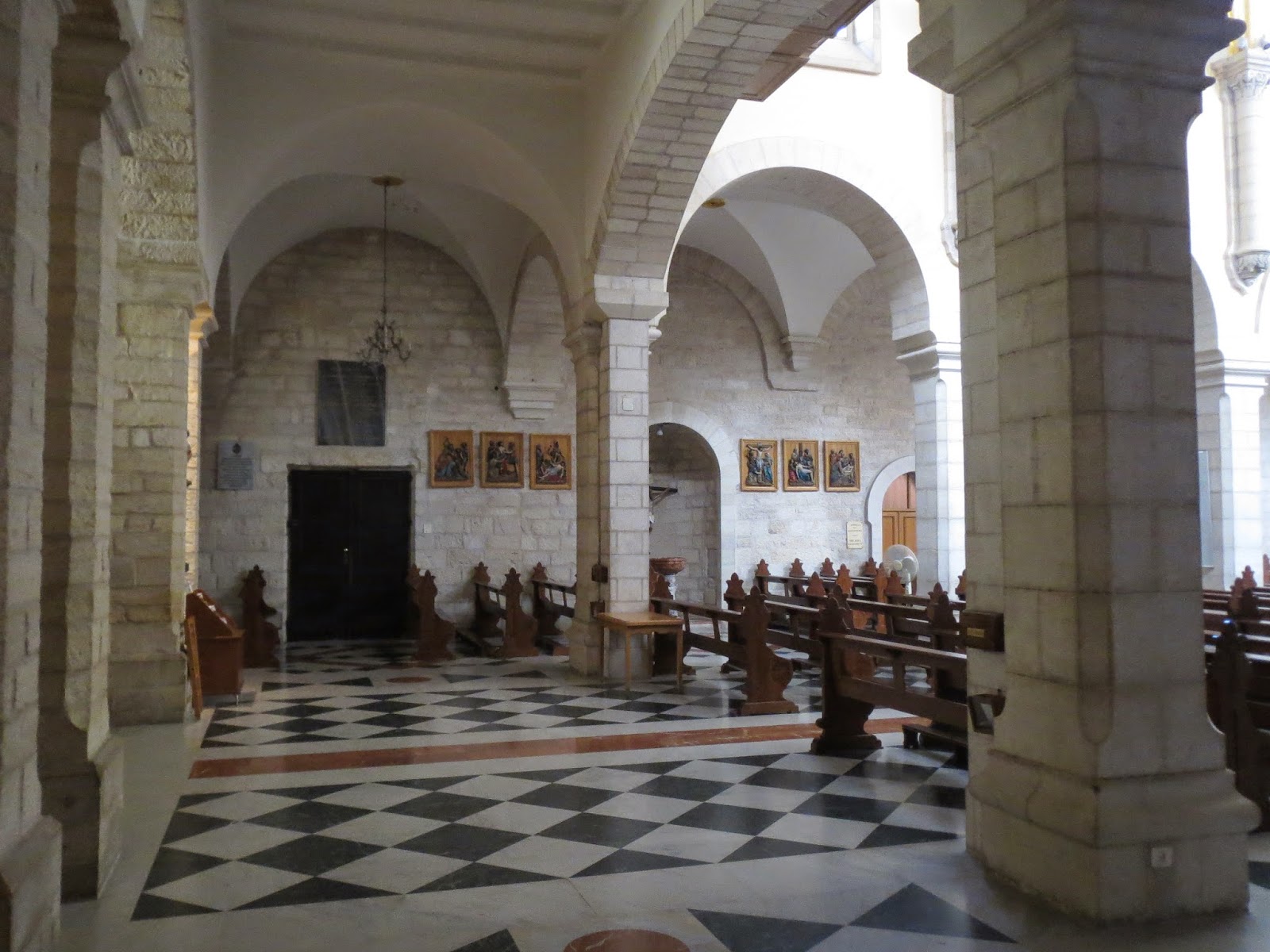On Monday, October 27th,
Steven and I returned to the Palestinian bus station taking the bus this time
to Bethlehem West Bank .
It only cost us 21Steven and I were both mystified as to where
As soon as the bus stopped, there was a scrum of men at the door all shouting at the passengers ‘Taxi, taxi.’ Not knowing how far it was to reach the Church of the Nativity and the other churches that Bethlehem is so famous for, we did take one with the driver hoping that we’d therefore hire him to take us to some of the West Bank settlements and be our guide for as long as possible. He was disappointed when he dropped us off at the market when we’d insisted on only wanting to see the churches.
 |
I wonder what Starbucks has
to say about this copycat version?
|
Outside the


Some background: The church is the oldest standing one in the country.
When the Persians invaded in 614 they destroyed every single church and
monastery in the country except this one. Legend holds that the church had a
wall painting depicting the Nativity tale, including the visit to the infant
Jesus by the Three Wise Men of the East. To the local artist, ‘east’ meant Persia
The interior of the church is gloomy so when you add in all the scaffolding in place, it was difficult unfortunately to appreciate what I’m sure must be a beautiful church. As soon as we entered, we joined the long line of people waiting to enter the Grotto of the Nativity. While Steven held my place in line, I walked around taking photos.
 |
The entrance to the grotto at
last!
|
Once a cave and the type of place that might have been used as a barn, the grotto has become plastered and decorated beyond recognition. After waiting in line for about an hour, we finally had about 3 seconds each to see the small altar; on the floor beneath is the focal point of the entire site: a 14 point star with the Latin inscription translated as ‘Here of the Virgin Mary, Jesus Christ was born.’
Adjacent to the Church of the Nativity and accessible by a passage from its Armenian chapel is the Church of St. Catherine, Bethlehem midnight Christmas Eve mass is broadcast around the world from this church! I found the church to be so incredibly beautiful, not
only its exterior but its interior as well.
onl
only its exterior but its interior as well.
onl

We descended steps from the church to see a number of dim grottoes that were once used as living quarters. Chapels here were dedicated to Joseph, the Innocents killed by Herod the Great and to the 4th C. St. Jerome who is credited for writing the Latin translation of the Bible right here.
Walking from Manger Square
Seeing the picture of these
young boys brings a smile to my face again. The boys had been walking behind us
when all of a sudden I felt a tap on my shoulder. When I looked around to see
who had done it, these boys looked at me with such innocence and glee in their
eyes. Of course, I turned around and did it right back at them a moment later
which they found equally amusing!
 |
Don’t know what the man was
cooking and selling but an interesting photo.
|
 |
I just happened
to look up as we passed a small alley on our left and noticed these fancy
dresses.
|
 |
| Saw these popcorn trucks all over Bethlehem. |
 |
| Bethlehem's main street. |
 |
| Steven getting directions back to the bus station from a Palestinian police officer. |
 |
Palestinian taxis have green
license plates and all other Palestinian vehicles have white license plates
compared to the yellow plates that are used in
|
Many tourists choose to hire
a taxi to visit Bethlehem’s other famous sights for Christians, Shepherd’s
Fields, Rachel’s Tomb and Milk Grotto Chapel and also visit some of the refugee
camps but we were content seeing the Church of the Nativity and Manger Square.
We spent quite a bit of time walking through the Arab souk on our way back to
the bus stop and our short ride back to Jerusalem Bethlehem Bethlehem
























































































No comments:
Post a Comment